Now for something completely different, a review of a tenor saxophone mouthpiece that only costs about 30 bucks! Yes, you read that right! Today, I am reviewing two Rico Metalite tenor saxophone mouthpieces. I have been intrigued by these sax mouthpieces for a few years because I have heard a bunch of people rave about them in reviews and on saxophone forums online because they supposedly played great and were pretty inexpensive. When I search for them online at the time of this review, they range from 25-32 dollars brand new! That is cheap! A box of 10 saxophone reeds is in that price range! I was skeptical that these could be good sax mouthpieces at that price so decided I needed to try them out for myself.
Although 25-32 bucks is pretty cheap, I didn’t want to have to buy these mouthpieces new and then try to sell them if they were awful so I went on SOTW (Sax on the Web Forum) and asked if anyone would be willing to let me borrow an M7 and a M9 mouthpiece to try out and perhaps review. I was in luck as a willing volunteer responded almost immediately. Isn’t the internet amazing?
Rico Metalite M7 and M9 Tenor Saxophone Mouthpiece
I received the Rico Metalite M7 and the M9 mouthpieces about a week later in the mail. From what I have read online, the Rico Metalite M7 is a .105 tip opening and the Metalite M9 is a .115 tip opening. The material looks like some sort of plastic to me and after searching the internet, I found this information on Amazon:
Metalite mouthpieces were designed by Arnold Brilhart and offer the brilliant sound qualities of metal using a durable composite material. Metalite mouthpieces are free blowing and feature three facing options: M5 (.095 short facing), M7 (.105 medium facing) and M9 (.115 long facing).
Designed by the world’s leading mouthpiece designer, Arnold Brilhart, the Metalite line of mouthpieces incorporates revolutionary materials to achieve ease of tone production and a wide range of tonal colors.
In the description above, it says Rico is using a “revolutionary material” but in other sources on the internet I have read “plastic”, “polycarbonate” and “composite material”. I believe all of these equate to plastic if I am not mistaken. At one time, plastic was quite revolutionary so I guess we can give them a pass on their “revolutionary material” description.
Rico Metalite M7 and M9 Tenor Saxophone Mouthpiece
When I received the Metalite saxophone mouthpieces and opened the package, the mouthpieces looked pretty much how I would imagine a 25-32 dollar mouthpiece would look. They are lightweight, look like plastic and look like they are machine made to my eyes. (If I imagined the Terminator making tenor saxophone mouthpieces, this is how they would look).
The rails, tip and baffle elements are all present but you can see some unevenness with the naked eye. On the M7 the left rail looks thicker than the right and the tip rails don’t look exactly even on both the M7 and M9. The rails and tip rail look a bit thicker than you generally see on a handmade sax mouthpiece also. You can see fine horizontal milling lines on the table and rails if you look closely under the light.
The baffle looks almost like it is a separate piece that was glued in to me. I don’t see any spaces around the edges of it, so if it is glued in they must make it to exactly the right size to fit so snuggly. The baffle is definitely high. When I first saw the baffles, I thought that these two mouthpieces would be really bright screamers that is for sure.
The baffle right after the tip declines at a greater angle until it hits what I think is an added baffle which is a bit higher. This causes a bit of a depression right behind the tip rail. Later in the review, I mention how I am surprised that these Metalite mouthpieces aren’t brighter but I think it might be because of this depression right after the tip rail.
The sidewalls of the Rico Metalite mouthpiece are straight right up to the border of the chamber. Although the chamber is rounded out, when you look into the shank end of the mouthpiece you can see the straight sidewalls. The opening to the chamber has a rectangle type shape but both sides of the rectangle on the top and bottom are curved. You can see this when you look at the last picture in this review below.
Rico Metalite M7 and M9 Tenor Saxophone Mouthpiece
I have had these two Metalite mouthpieces on my desk for a couple of months now and have tried them probably a dozen times over those two months. Let’s start with the good points.
The good news is that these mouthpieces play. They are not reed picky and every sax reed I put on them played fine and passed the suction test. They played loud and had tons of power when pushed which is no surprise when you look at the baffles. I was actually surprised that these mouthpieces weren’t much brighter due to those incredibly high baffles. I considered them to have a more mid-range kind of sound as if you boosted the mids on the EQ dial. The harder you blow, the more the brights would come out but at a soft to medium volume I considered them pretty mid range.
With a softer reed, like the Rigotti Gold 2 1/2 Strong reeds, the Metalite mouthpieces are brighter than with the Rigotti 3 Lights which is a slightly harder reed. With the Rigotti 3 Lights, the Metalites sounded a bit darker and warmer to me but the increased reed strength also made them a little more edgy at times.
The intonation was fine also and within normal parameters for my saxophone. Sometimes a high baffle sax mouthpiece can throw the intonation off on my Selmer SBA but with the Metalites it was fine. I thought they played quite well for a sax mouthpiece in that low price range that is for sure.
Rico Metalite M7 and M9 Tenor Saxophone Mouthpiece
Now for some negatives. Please remember that I have played and reviewed hundreds of the best saxophone mouthpieces over the years so my perspective and opinions are based on my experiences with all those other mouthpieces.
The reason I didn’t do a review sooner was that I never felt totally comfortable while playing these Rico Metalite mouthpieces. They played fine as you can hear when you listen to the clips but there were some little things happening while I was playing that stopped me from being 100% comfortable on these mouthpieces. Here are a few examples:
There were many times where I would go to play a note and the mouthpiece wouldn’t speak initially. I think you can hear a couple of these times that I included on the sound clips below. Many times that can be caused from an inefficient facing curve that might not be the best. When this happens many times I will try a suction test and the mouthpiece and reed will fail so I know what is causing it. In this case, the metalites passed each suction test so I’m guessing maybe the curve isn’t as efficient as I am used as compared to some other more expensive mouthpieces I have tried. I don’t know for sure and am just hypothesizing here.
The other thing I experienced was that sometimes notes played fast would sound clunky to me. They were not smooth. Many times I experience this when the range of notes on the saxophone are not even and uniform to each other in timbre. You can hear in the sound clips where the middle register of the horn sounds a bit “stuffy” and “tubby” (another word for tubby is muted or nasal) to my ears. When I jump from a note that is clear to a note that is “tubby” in sound it feels like the line is disconnected and not smooth and flowing.
I especially encountered this when I played larger intervals. When playing notes that are next to each other the differences in tonality and timbre are less than when you jump around usually. I remember playing fourths a couple times and really struggling with the lines sounding smooth and even. Unfortunately, that fourth line didn’t make the sound clip so you will just have to take my word for it.
I also felt like my articulation wasn’t as fast or smooth on the Rico Metalite mouthpieces. It was ok but it wasn’t as crisp and clear as many hand faced mouthpieces I have reviewed over the years. I assume that what I was experiencing had something to do with the tip rail design or that depression after the tip rail.
Rico Metalite M7 and M9 Tenor Saxophone Mouthpiece
I included two sound clips for each mouthpiece below. One is with the Rigotti 2 1/2 Strong reed and one is with the harder Rigotti 3 Light reed. I will say that I didn’t feel 100% comfortable on either mouthpiece during the recordings but of the four recordings, I think I was the most comfortable on the M7 mouthpiece clip with the Rigotti 2 1/2 Strong reed.
Personally, I much preferred the M7 at the .105 tip opening than the M9. The M9 played great with the Rigotti reeds but the .115 tip opening and long facing curve just felt too open for my tastes. I also felt like the M9 had a tone that was a bit too spread and open sounding for me. This is a hard concept to describe for me but it is almost like when a tone is focused I can hear the center of it and immediately know where it is sitting as far as intonation. When a tone is really spread and open I feel like I have a hard time pinpointing that center of the tone if that makes sense.
With more open mouthpieces, I also experience a paradox in that even though the sound might be louder and bigger to my ear, I find it harder to hear myself in the mix of music. It’s like it is too big and spread all over the room. When I play a more focused sax mouthpiece I can more easily hear myself in the mix of sound going on in the room.
Rico Metalite M7 and M9 Tenor Saxophone Mouthpiece
Since the Rico Metalite saxophone mouthpieces are marketed as having the “qualities of metal” and have those high baffles, I did gravitate towards playing in a louder more altissimo heavy style. I did attempt to throw in some straight ahead lines and more laidback lines also so you could hear the Metalites in different volumes and styles as well.
Rico Metalite M7 and M9 Tenor Saxophone Mouthpiece
The truth is that if you look at the Amazon reviews of the Rico Metalite M7 at the time of this post, the M7 has 63% 5 star reviews and 25% 4 star reviews. That is 88% of people gave it 4 or 5 star review. The other 12% are 3, 2 and 1 star reviews. (6% 1 star reviews). Lots of people evidently love these mouthpieces if you go by the Amazon reviews.
Like I wrote earlier, the Rico Metalite mouthpieces play and are as in-tune as most mouthpieces out there. They can do the job required if you are playing on a loud Top 40 gig or even a more laidback gig. At the same time, they are still a 30 dollar mass produced saxophone mouthpiece. In my opinion, the Metalites are good for what they are but they are not even close to the refinement, playability and tone of the large number of handmade mouthpieces I have reviewed on my site to date. Of course, those are much more expensive also, so you have to factor that in the whole equation also.
If you are looking for a loud mouthpiece and can only afford the price of a box of reeds for it then the Rico Metalite would be a good choice for you. I actually don’t know of much else in this price range besides the Yamaha 4C and 5C saxophone mouthpieces. If however, you can afford a higher budget sax mouthpiece, I do believe many of the mouthpieces in the 175-400 range will offer you more stability, smoothness, evenness, complex tone and better playability. That’s my opinion for what it is worth………
Listen to the clips and let me know what you think in the comments. If you play or have played a Rico Metalite and either love it or hate it, I would also love to hear your opinions below as well. Thanks, Steve
Rico Metalite M7 Tenor Saxophone Mouthpiece-Rigotti Gold 2 1/2 Strong
Rico Metalite M7 Tenor Saxophone Mouthpiece-Rigotti Gold 3 Light
Rico Metalite M9 Tenor Saxophone Mouthpiece-Rigotti Gold 2 1/2 Strong
Rico Metalite M9 Tenor Saxophone Mouthpiece-Rigotti Gold 3 Light
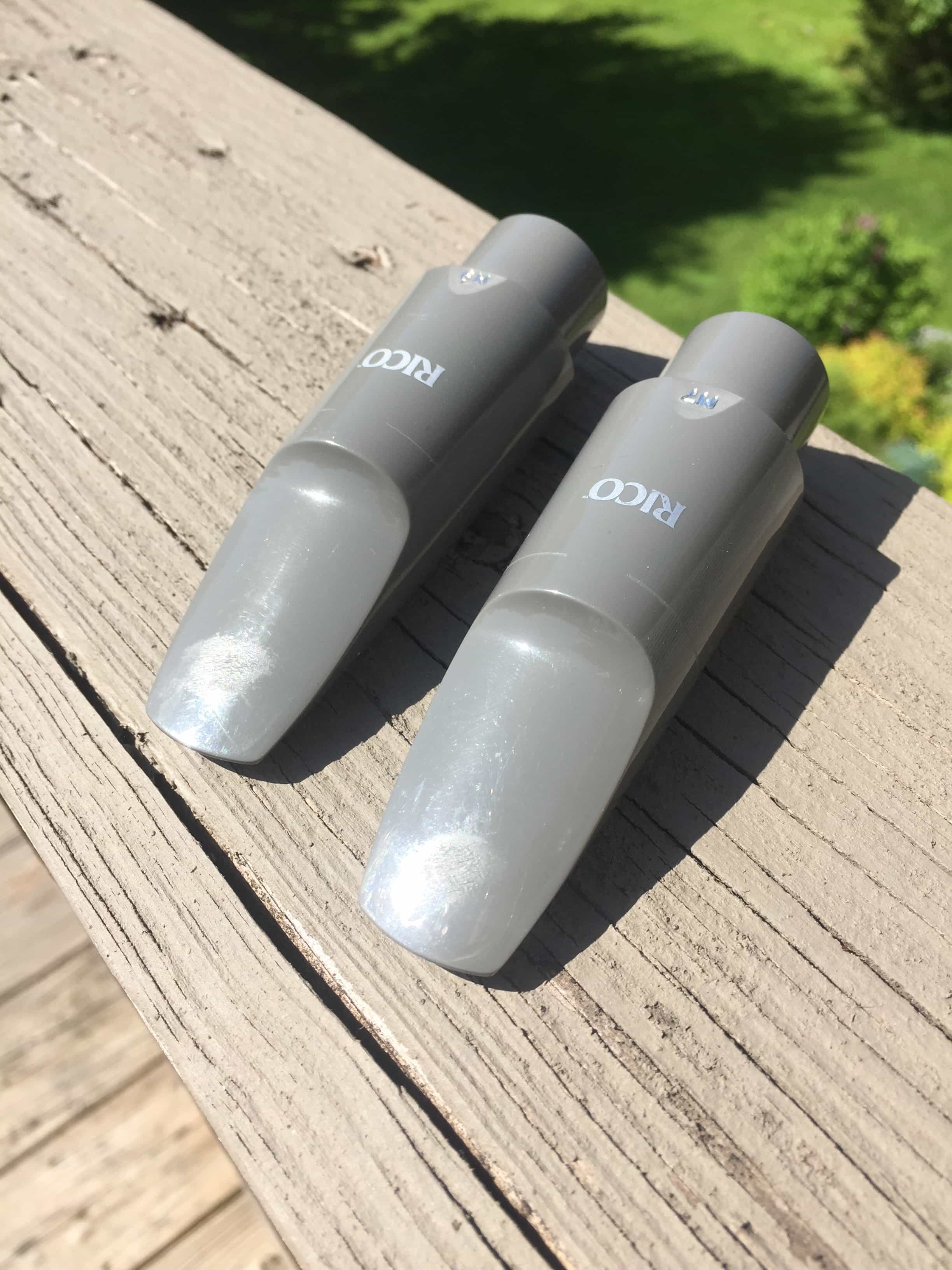
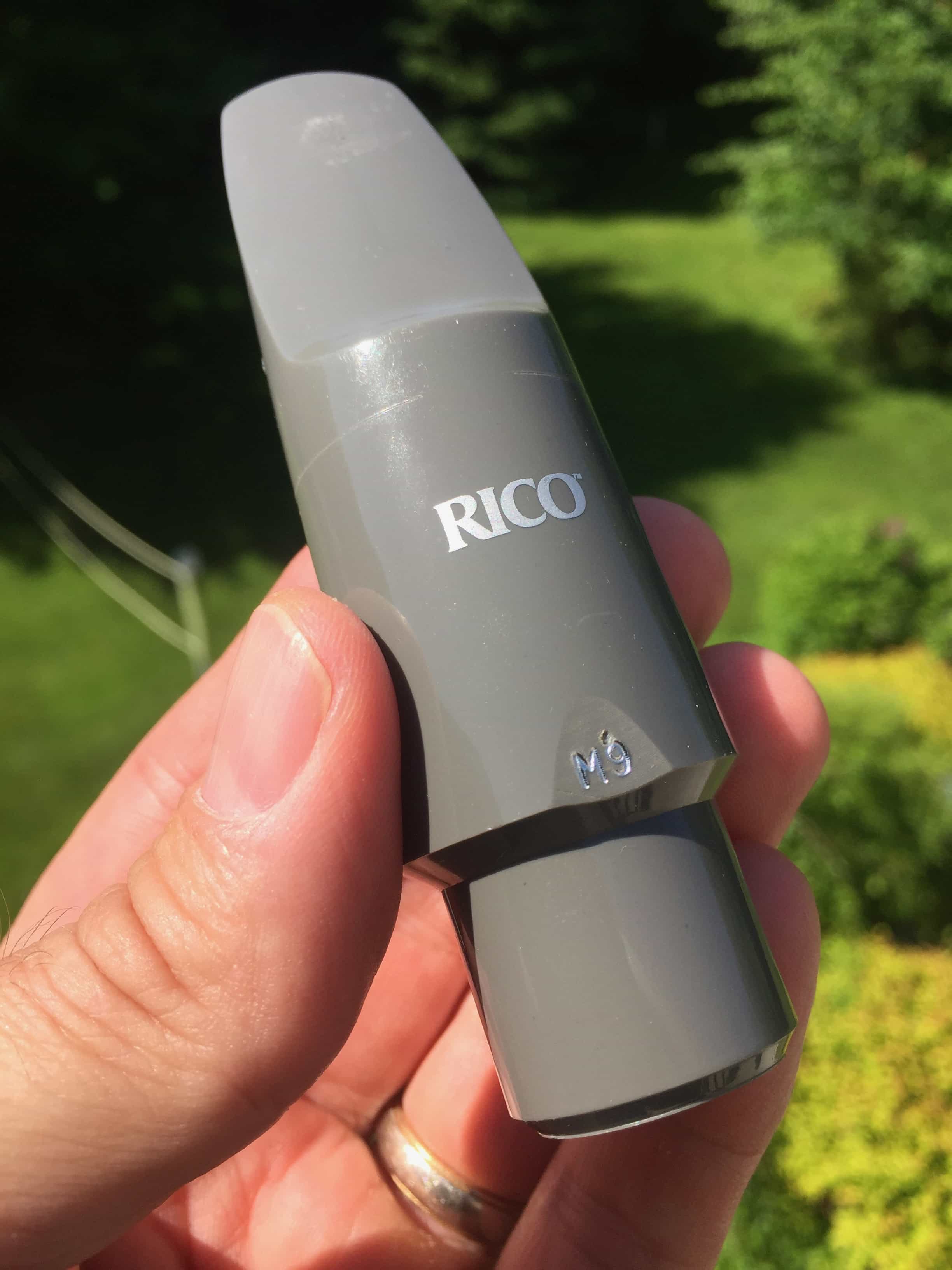
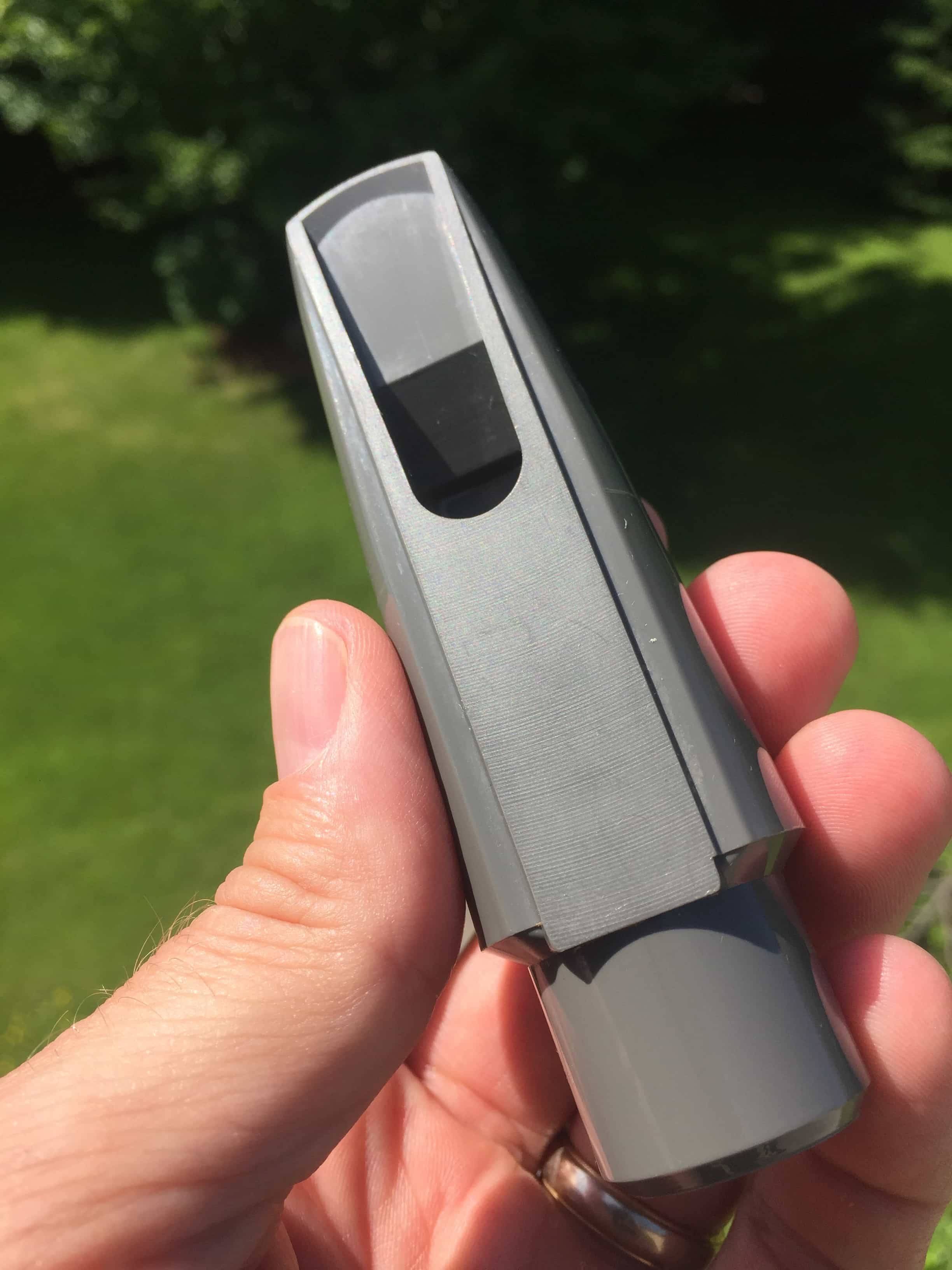
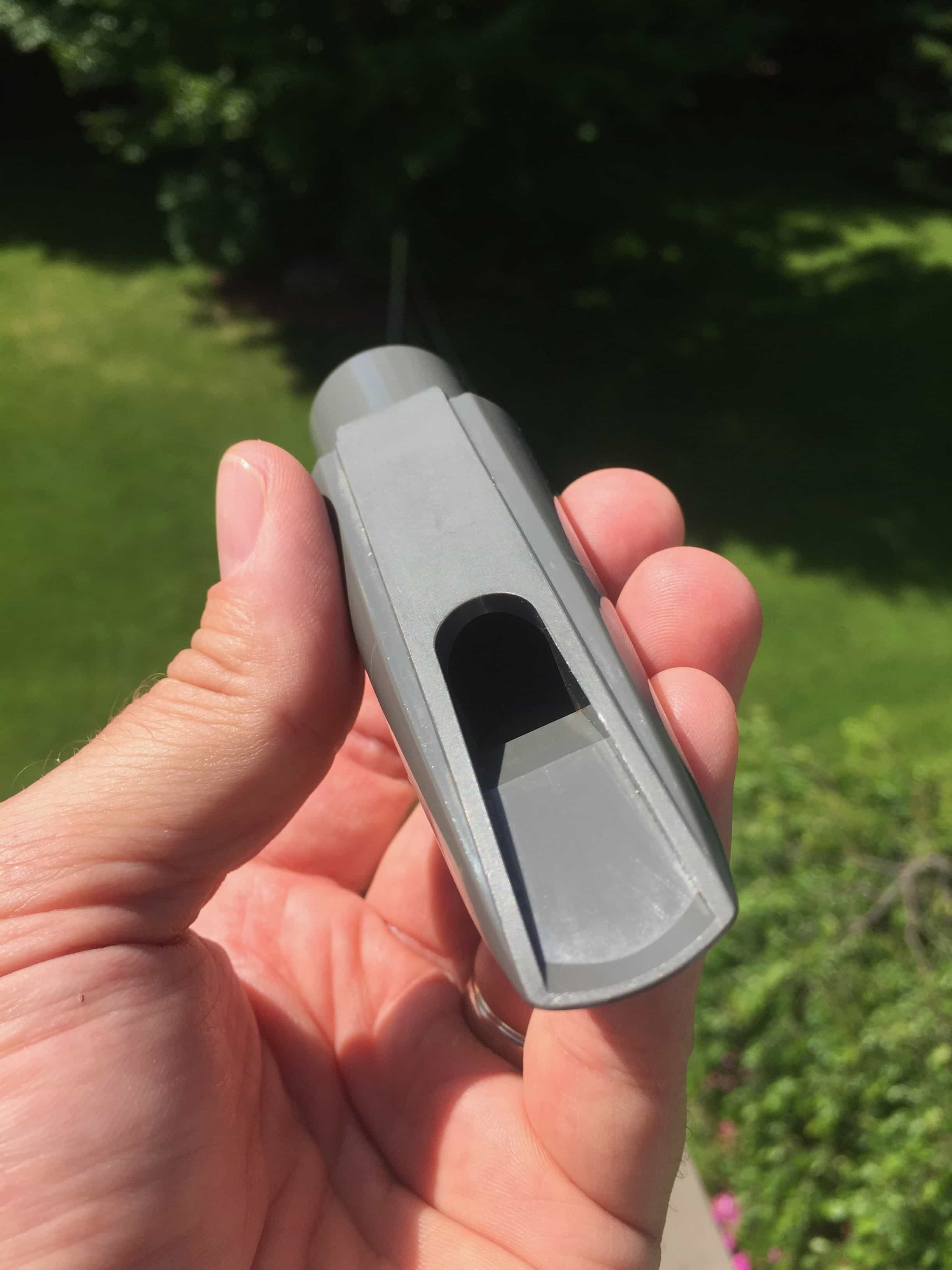

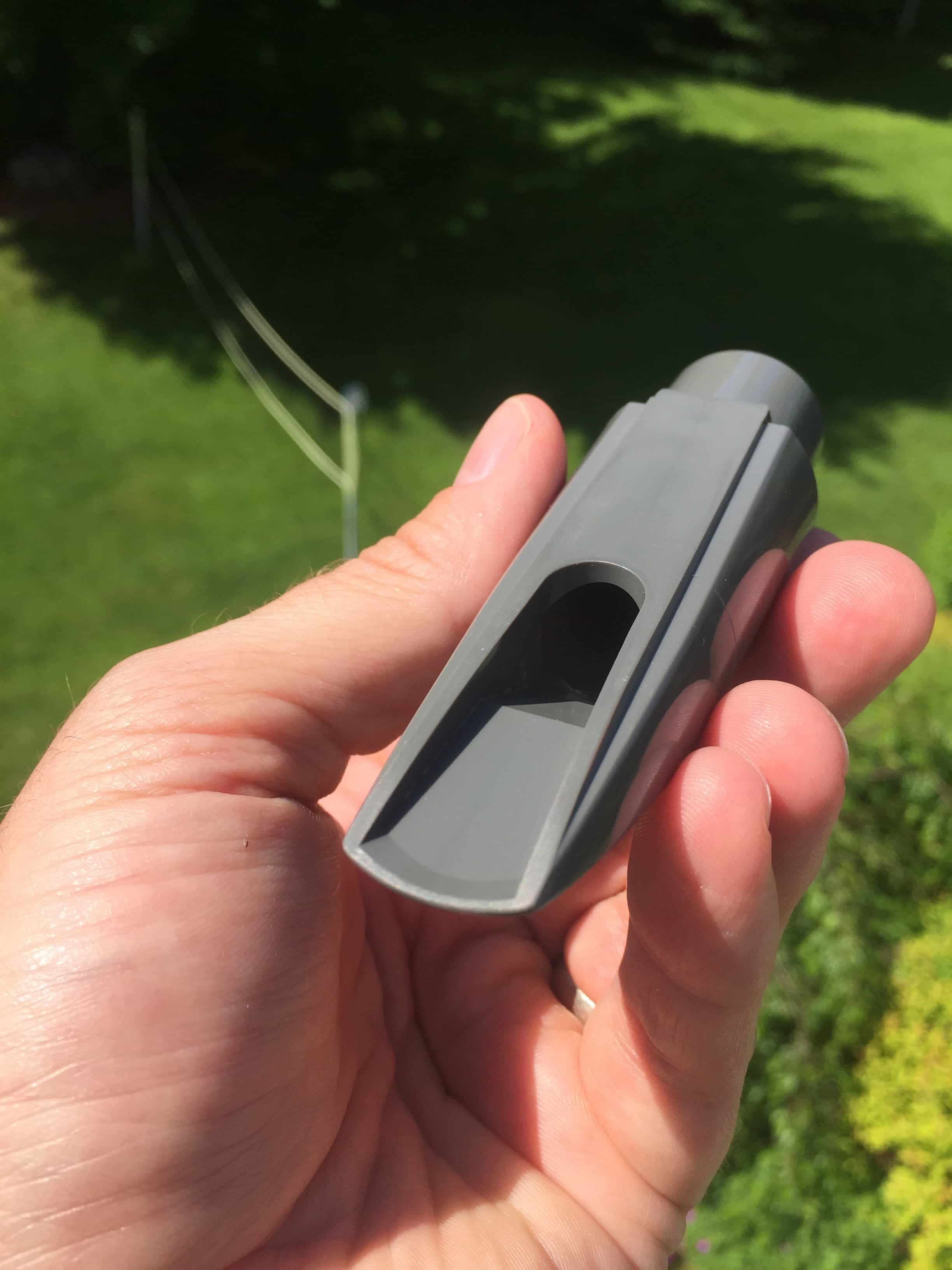
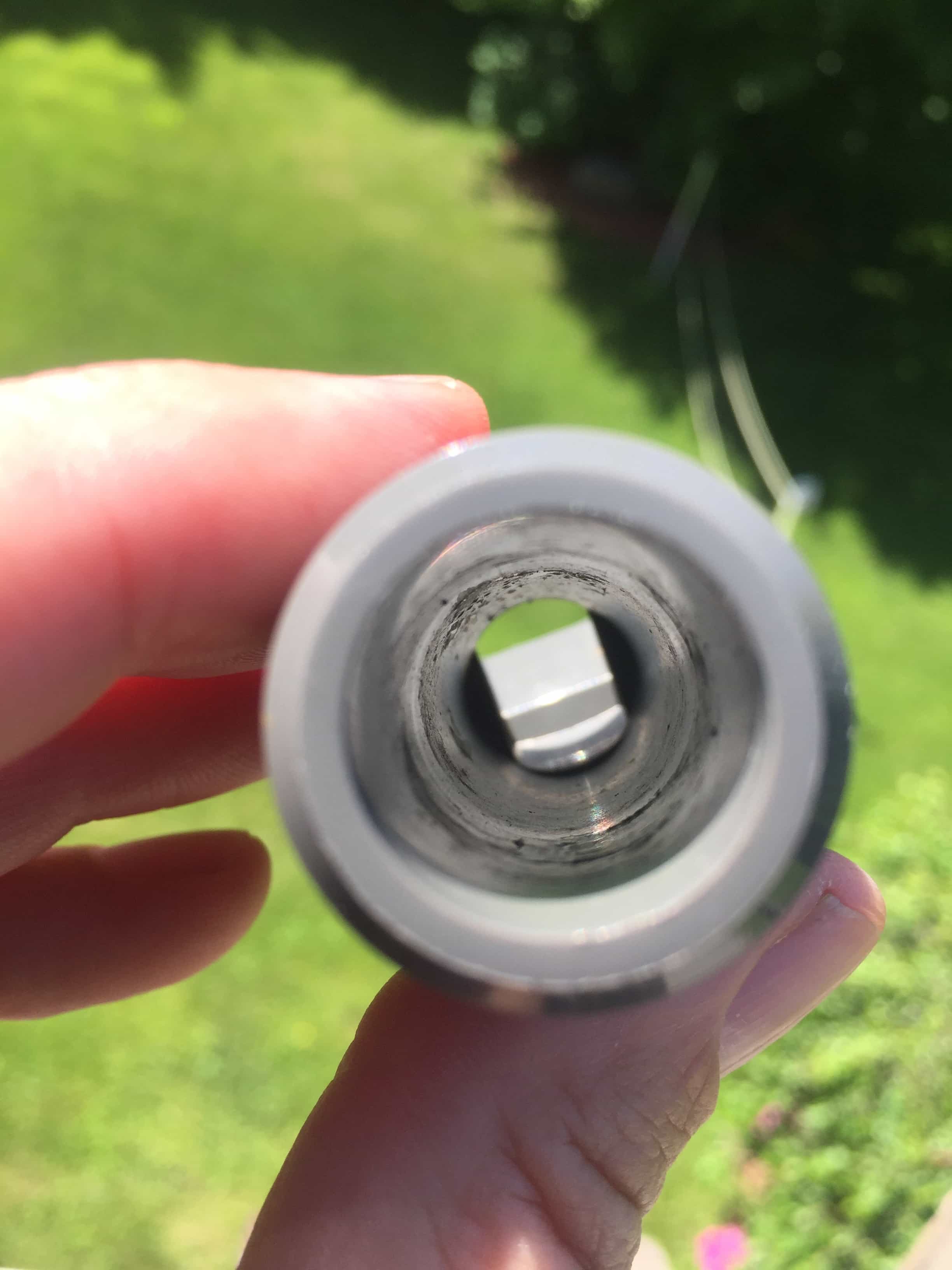



I really love these pieces on S (M7)/A (M5)/T (M7). They’re surprisingly warm, and super versatile. A little brighter than I’ve played in the past, but I’m pretty sold on them. There are some quirks, and maybe they’re not quite as smooth as more expensive pieces, but they sure are fun to play! I have the complete line of current production pieces, and even have the discontinued M9 for alto and clarinet, and M11 for alto and soprano. On those larger tips I get a very Jackie McLean-ish alto sound that’s just over the moon!
I bought one for Barisax in my school orchestra ….
It’s worth the money and the cheapest working mouthpiece out there….
Reed friendly and the sound is ok….
I have a friend who plays Bari and uses a 9 I think… tone to die for.
They seem to have a nice sound.I will get in touch with the rico people, and buy the M7 [105] opening. Thank you Steve. Always the humble gentleman. Bless you and yours, Anthony
Anthony, I’d love to hear what you think after you get it. If you have time come back and let us know. Thanks, Steve
The M7 sounds great, if a little lacking in richness, and you can do a lot with it. With the M9, it sounds as if you are working at times. In any case, the piece is a great value. Bari players like these pieces too. Arnold Brilhart knew what he was doing.
I’ve used these mouthpieces on bari and tenor, and play tested on alto. In my experience, the smaller the horn the harder it is to get a good sound. Where bari already has such a dark tone, using a metalite to brighten it up sounds pretty good. It also seems to have the most even timbre in all ranges. On tenor, it’s a lot more wild but still controllable once you get used to it. On alto it was almost like it had too much resistance to be very playable, and I normally like a healthy amount of resistance. Just my 2¢, your mileagy may vary.
Who knows how they would sound after a refacing? Of course, the expense could go through the operation but … maybe something good could come out?
Giuseppe, That’s true but it is a hard call to spend 100 to reface a mouthpiece that cost 30 bucks. Plus you could never sell it and get your money back afterwards………
I decided to buy the M9. The reason why the change, because I have afew 7of other mouth pieces and they close up when I play something a little difficult. So Ill try the 9 first. I should have it hopefully by 7 th or 8 th. Thank you Steve, for your help in all things saxophone. Anthony
I have a Rico metalite for my soprano. It plays okay, given the fact that it’s a $30 mouthpiece. Doesn’t compare with my Selmer mouthpiece. But, what do you want for only $30? I like playing the Lamberson but you can’t get one for $30 or $300. I guess what I’m trying to say is: you get what you pay for (if you’re lucky).
When I was new to playing saxophone, around 1985, I went to the NAMM Show in Anaheim, and Rico was giving away these Metalite mouthpieces (free!). By the time I got to the Rico booth, all they had left to give away was the M11 for Alto Sax. I took it home, and could barely play a note on it. I had forgotten all about them, so, thank you for the review – – I want to try one again!
Steve, thanks for reviewing an affordable mouthpiece!! Not sure if you have already, but could you review some affordable mouthpieces – maybe in the $75 – $200 price range?
The VanDoren’s come to mind – maybe the lakey’s, Kessler, Mouthpiece Cafe, Ron Cohen (RPC). (OK, the last 2 get up to $250, but Mouthpiece Cafe often has a $50-off sale).
Thanks! Many of us – and our students – can’t afford $400 or more for a mouthpiece.
And thank you again for the service that you provide
I visited Rico in around 91/92, and met Arnold Brilhart, who designed them, and I thought they had just come out then, as he gave me a bunch for soprano & tenor (and maybe alto, I can’t remember)., both the Metalite, and the “Graftonite” (hard rubber). He just said to check ’em out, and give away the ones I don’t want. Well, over the years I’ve played mainly the Metalite 9s on both tenor & soprano, sometimes even the 11s.(which I guess they stopped making). I’ve only used them occasionally, except in the mid-90s, I used the one on tenor a good bit, for a year or two, even using it on some recordings.
Actually, considering most cats are paying $250 – $600, these are an incredible steal, especially for young players, or just to have around as a backup. It’s not really fair to criticize them for not playing exactly as those costing 10 to 20 times more! For less than $30, I don’t honestly see why all school kids & others, wouldn’t be using them, as they are “near-pro-level” quality for a ridiculous price. Actually they are “pro-level”, as I’m a pro and have used them, and today I guess many others are. And frankly, I’ve played other, far more expensive ones I like less… I’m not using them these days, but may at any time, who knows?
That’s cool that you met Arnold Brillhart! I also met him, together with Elmer Beechler, when they had a factory in Northridge California, about 1985. I walked into the factory, truly a beginner, and they treated me like star! The 2 of them lined up maybe 10 alto pieces for me to try on the spot. While I was playing, they discussed which one I would like the most. I remember them saying things like, “Oh, he’s young. He wants the modern sound.” “No, I think he’s going more traditional.” I was too inexperienced to appreciate the differences in the mouthpieces. But, I felt guilty not buying anything, so I bought one with Brillhart’s name on it (the ARB model), and one with Beechler’s name on it. I still see the Beechler model in stores today. It’s the one with the white “diamond”
under your teeth.
This is true, Steve; but with 130 dollars, 30 the mouthpiece and 100 the refacing, you can have a mouthpiece that, for how you play it, seems to me as beautiful as others that cost 600 dollars! Of course, my ears can be wrong, and then I do not listen live but…
They could make a price of $ 100 and take care of the details!
I forgot, Steve: and then do a tip opening 0.085, as I like it; or with these you struggle a little? Can I play it, the narrowest, even if I use a H R Meyer 6M, tip opening 0.081?
Giuseppe, The smallest size is a M5 which is a .095. The problem with having it refaced to be at .085 is that you are bringing the table down lower towards the baffle which would make the mouthpiece even brighter. Not sure how it would play at that tip opening. For 30 bucks you might as well try the M5 and see how it feels to you……..
Hey Steve, and everyone – – I just received my Metalite #5 Tenor piece yesterday. I want to try it on a gig before I reach a verdict. I prefer this tip opening (.095), which is the same as my favorite piece, the Jody Jazz Hard Rubber 6*. But the facing on the Metalite is a bit shorter. The Metalite is surprisingly easy to play in all registers. The timbre changes more during volume drops and swells, compared to the Jody. My main concern with the Metalite, is that I can’t quite find its “personality” yet. There is almost no “bark” to it? Anyhow, it is the BEST $30 mouthpiece I think I have ever tried!
In fact, you’re right Steve. Then, even Mark seems to confirm the ease of the sound emission!
Am I wrong if I say that the sound of this mouthpiece resembles a bit that of my (modern, ’80 years) metal Dukoff S7?
Thanks for the review and for your usual kindness.
Giuseppe, Well it has a high baffle like the Dukoff S7 so it is similar in that regard. I haven’t played one of those in like 30 years so I can’t really speak on how close they sound to each other. Steve
Hello Giupseppe, I remember my Dukoff S7 well enough to tell you that the Metalite does NOT sound like the Dukoff. The Dukoff offered a harsh / bright sound. Think of 80’s Wayne Shorter. The Metalite sounds (to me) much more tame. I hope that helps?
Hello Steve, about early afternoon I received the M9. I love it. It sounds more bright. It has dark quality also. All around is easy to play. It seems easy to blow. I play an Ambika 8*, a lot more cost, and I sub tone with ease Metalite a wonder! Peace and joy. Anthony
Sorry my first e-mail got lost. The M9 plays great, bright with resonance. I played a Ambika8* Theo Wanne. Metalite is the best for me out plays all my mouthpieces. Happiness & peace. Anthony
Hello,I think this might add a little light. I use a Theo Wanne Enlightened ligature. Sometimes the ligature plays a bigger part then we think. I dont know? Plays good. Peace
Thanks Jazzrapper55; I start worrying about my ear and/or my memory …
Anyway, it seems to me that Shorter used an Ottolink!
I remember that, as Antonino writes, depending on the ligatures I used on the Dukoff S7, the sound changed a lot, becoming much darker or much brighter!
Thank you all.
One buck = one dollar?
Before euro, in the Roman dialect, 100 lire = ‘na piotta, duecento lire = du’ piotte. Mille lire = ‘n sacco, or ‘na sacca…
‘na = una; du’ = due; ‘n = un.
Intercultural exchanges I hope not off the subject!
Giuseppe, Yes, sorry. One buck is one dollar……..
Jazzrapper55, I used the Dukoff S7 on tenor Jamaha YTS62, purple logo, not on alto!
Steve, sorry about what? I learned something new … And I was joking!
I will translate you regarding the lira (old dear lira), in case of time travel of Rome pre euro: 100 lire = ‘na piotta, 200 lire = du’ piotte. A thousand (1.000) lire = ‘n lot, or ‘na sacca …
‘Na = one; du’= two; ‘N = a.
Best wishes,
This language lesson costs 50 bucks and, of course, I’m kidding!
Giuseppe.
Steve, have you never tried the Rico graftonite?
Giuseppe, No I haven’t……….
I was told by a top mouthpiece guy that the Metalite is too hard to do any resurfacing. I’m not sure if that’s true, but he should know what he’s talking about. Has anyone done it, or know someone who has?
I’ve also tried the Graftonite, but they seemed a bit too tame, and not as open as the Metalite, & I believe they only go up to a 7. I would think they can be worked on, and I agree with Giuseppe, if you spent $100 customizing either one to sound the way you like, that would be a great deal, can’t buy anything much today for $130… And I don’t see why you wouldn’t be able to get your money back if you decided to sell it, cause it’s value isn’t what a stock one would go for, any more than a custom made piece is only worth what the blank cost…
I think most mouthpieces today are way overpriced anyway, including the older ones, however, at least with those, there’s a supply and demand element involved. I wish I had held on to some of my older ones, not just for their market value, but you never know when what didn’t play as you liked 20, 30 years ago, might be perfect for today… Just like old reeds.
Thanks Steven Charles, also for the information on the Graftonite; mine was just a curiosity; however, for the value in reselling, eventually, one could be put an initials by those who did the refacing … and then, if one wants to buy it, try how it sounds and if he likes it.
Do you think that in the ’70s and’ 80s I gave away so many mouthpieces to friends; I bought many, then the “commercial” ones cost less than today and they sounded better and, then, I kept only the one from time to time chosen!
Why did not I keep them?
I was playing bari in 4 piece horn section for an extremely loud rock band in the 90’s.While performing at Summer Namm in Chicago, I was given a Metalite M10. I’d been playing on a Berg Larsen 110 2 M and for that situation actually preferred the Metalite. The mouthpiece was extremely loud and bright. When I stopped playing Bari in rock bands I went back to the Larsen.
I played the Metalite for a few days. First an second day great. The next 4 days shrill impossible. It now sounds totally shrill. I dont know why this happened. I’m back to my Ambika8*. Sorry I will give it about a week before I open my big mouth again. Peace . Anthony
You should try the m7 with a Rovner dark ligature. I played mine with a lig similar to what you are using and the Rovner and it responds and and plays better with the Rovner. I have been playing it a lot with the rovner. I like rico 2.5 reeds on this mouthpiece as well as rico reeds on this mouthpiece on bari and alto as well. I have spent a lot of time on the metalites and like them. I agree with you that m7 is the best size for tenor as I have played all 3 sizes a lot and m5 does not work for me at all and m9 does not work as well as m7. I play m7 on bari and m5 on alto. I recently switched to rico 2.5 on tenor as I was playing rico 2 before. Matt
This was a great review. I’ve been playing metalite m5 for about 4 years now on alto and tenor with 2.5 synthetic reed. Playing sax for 35 years blues, jazz, r&b, gospel. Out of all the mpc’s that I’ve played and own this cheappy fits my playing. Playing in a five piece band with guitar, organ, bass, and drums I find I can cut thru during gigs and soften up for weddings and solo acts. I agree with you that some notes go missing or slow in response on fast riffs.
I just came across this posting so I am late to join in. I have an M7 tenor Metalite which I find to be an excellent mouthpiece for the money. To me, it plays and sounds very similar to my Vandoren Jumbo Java T75, but is slightly less bright. It is shorter in total length by about 1/4 inch so it requires more cork thickness at the tip of the neck. The intonation is good over the full range and it responds well to low and high volume playing. I feel good control of it throughout the playing range. I think that the “bang for the buck” with this Metalite is really unbeatable. It’s way better than I expected it to be, given the $30 cost. I don’t much care for its appearance (color and “plastic look”) but otherwise, I thik it is an excellent buy.
John, Thanks for adding this excellent review of the Rico Metalite. Steve
I recently acquired a Rico C5 Graftonite mouthpiece for alto sax and found it to be a worthy inexpensive substitute for a baffled mouthpiece to generate a somewhat different vibe than my Meyer clone type piece. I liked it enough that after some extensive research, I decided to try a Rico Metalite M7 for tenor as an alternate vibe to my Otto Link STM 7*. As these Rico pieces are so inexpensive, to my amazement, I was fairly impressed with my M7. The step baffle gave me an in your face kind of tone that I sometimes want from my tenor, different than the OL. I was also able to control overall tone, dynamics and even altissimo with my embouchure without much acclimation. I always wanted a metal Berg to go with my STM, but for $30!, the M7 is the next best thing, as desired pieces are so pricey. Yes, the pricey pieces are ‘slightly’ better, but to justify 10 times the price, not so much. On A/B comparison with an expensive and well faced piece, there is slightly better tone (and potentially playability) for the cost of admission, but the differences are all but non-existant to the less than top-notch player or average listener. Unless you are are top notch professional or have cash burdening your pockets, I would highly recommend these pieces, as they do help facilitate a more aggressive sounding saxophone, but can still be played in a more subdued way if your embouchure technique is up for it.
Shame I’m late to the party on this. Anyway, I’ve been playing Brilhart mouthpieces for over 40 years, Level Air Mk Ones and Twos. I also play Lawtons. I have 6 Ricos including 4 Metalites.
The original Metalites were really good especially the Alto ones; the original rough texture plastic Tenor and Baritone ones just feel a bit too bulky and fat for me. They changed from plastic to polycarb sometime in the 90s. The reason I own mine is because as soon as I get a new sax I upgrade the mouthpiece for a 7 or 9 tip opening to keep in the case as a spare and the Metalites offer loads of power. They are not to everyone’s taste though but, what I do suggest to students is that the Ricos are a good cheap way to experiment with wider tip openings and high baffles until they get their sound settled and know what they need for power and projection. Many players waste hundreds of pounds and dollars every year buying the wrong tip opening or chamber. They buy a 4 or 5 without realizing what that means and later they need a 7. So, the Ricos are a very cheap tool for discovery and learning how to ‘Shape Your Sound’.
Given time and experience you can make any Rico piece sing top to bottom … unless you get a duff one, and they deliver a big bang for your bucks. Arnold Brilhart was so proud of these when he realized he could deliver the high baffle sound concept and chamber combinations to all comers at very low prices.
Ron, I love this advice and way of looking at it. This is a reasonable way to figure out larger tip openings and what a high baffle feels like before you spend hundreds more and then decide you don’t like a 9 tip or a high baffle. Thanks for the advice.
I own a C3 and an M5 for the alto sax which were in the case when I bought the saxophone and a C7 for the tenor sax. The alto M5 mouthpiece is really blasty, if there is such a word, but plays in tune. The C3 a bit too closed tip opening for me, however the C7 (black) mouthpiece sounds pretty darn good on the tenor sax. I also have a Lakey 9 mouthpiece and that is also pretty good and loud. I also have a Lakey 4 which, for some reason, is just as loud as the 9. Steve has such beautiful control on whichever mouthpiece he plays which leads me to conclude that I need to develop the solid breath control that he has. Sam
Hi Sam, yes, I did some testing recently because a student of mine wanted more power. I advised them to move up from a 5 to a 7 tip opening as a 7 is where you start to get a decent increase in power due to more airflow. Anyway, I tested my alto 9 tips against some 4, 5, 6, 7 and 8s using a sound meter. There was very little difference and they all ranged around 76 and 79 decibels with me blowing; bearing in mind that the decibel scale is logarithmic by 10 times and I varied on all of them and, that 1 decibel is actually not really that perceptible.
Oddly enough, a Rico Graftonite B5 pushed as much power as my metal Brilhart 7 and Rico Metalite 7, as well as my Lawton Bronze 9BB and Berg Larsen 8 (115/1000”). The only difference being that the reed closes up on the smaller tips. So, to confirm your thoughts, it is your airstream that provides the power with one exception; high baffles give you more edge, which is perceived as louder. But big tips do allow you to get a fatter sound also if you relax your embouchure in a sub-tone fashion while getting more volume.